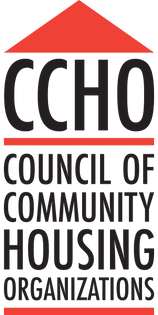Prior to the COVID-19 pandemic, momentum was building for San Francisco to create its own public bank where The City could be in charge of its own finances and free from Wall Street influence.
Advocates argued that The City would be able to invest in key local areas like affordable housing and small businesses while being accountable to taxpayers as a public entity — something that became more desirable after the Great Recession banking scandals.
The push to create a public bank, of course, became another point of competition with Los Angeles, with city officials jockeying for San Francisco to be the first to apply for a banking license under a 2019 state law.
All that stalled during the coronavirus crisis. But as The City and country enter recovery mode, San Francisco is working its way back to seriously pursuing a public bank. Under legislation unanimously approved by supervisors last week, a working group would develop a business plan to move the idea forward.
“I think it’s pretty clear, particularly for working people in San Francisco, that recovering — and truly recovering — from this pandemic is going to be a multi-year effort,” said Supervisor Dean Preston, who authored the legislation. “A public bank needs to be part of that recovery. The ongoing public revelations around the flaws with the for-profit, private banking model have helped to build support.”
Plans would be crafted for what’s called a Municipal Finance Corporation (MFC), an entity that doesn’t take deposits but focuses on loans, to work alongside a public bank. The whole plan is being fine-tuned by the newly formed organization, known as the San Francisco Reinvestment Working Group, which would have members appointed by supervisors as well as representatives from the Treasurer and Controller’s offices that would report to city officials in 2021.
However, the working group must still be funded through The City’s budget process with about $470,000 for a business consultant, community engagement and clerk staff. Depending on the direction and model, a full-fledged bank itself could cost up to $3.9 billion to break even over decades, the Treasurer’s Office estimated in 2019. The Budget and Legislative Analyst had a different approach in 2020, one that recommended shifting $1 billion from The City’s investment pool to start an MFC that would be immediately profitable.
The California Bankers Association — one of the main opponents to Assembly Bill 857, which allows cities to apply for a public banking license — feels there is no need for such an institution pushed by “a vocal minority” who want to bring investment back to the local level.
“That is a talking point that, in all honesty, is without merit,” said Beth Mills, CBA spokesperson. “We think all communities and constituencies are served very well from their financial institutions. There doesn’t seem to be a strong outcry from the general public for the government to set up public banks.”
But the payoff is both worth it and necessary to The City’s long-term well-being, proponents say.
Small businesses in North Dakota secured the most loans from the Paycheck Protection Program during the pandemic than any other state relative to their workforce thanks to the state’s century-old public bank, according to the Washington Post. Meanwhile, big banks were less likely to dole out PPP loans to lower-income neighborhoods or those with more Black and Hispanic residents, the San Francisco Chronicle reported.
“We need our own financial institutions to help us weather these storms,” said Sushil Jacobs of the San Francisco Public Bank Coalition. “That fundamental issue of who is this city for and who can afford to live in it, there’s no solution to that on the horizon.”
It’s “potentially game-changing” in the realm of affordable housing, said Fernando Marti, co-director of the Council of Community Housing Organizations, a nonprofit affordable housing collective. San Francisco has been stuck in a system of building affordable housing tax credits and private capital with a diminished role from the federal government in public housing, he said.
“Ideally, this is something that allows us to create new models of affordable housing,” Marti said. “The public bank is a part of that discussion of something we can innovate that can get us beyond what we’ve been doing for the last 30 years. It’s going to be huge — creating a bank is not a little thing.”
The plan is more focused on beginning as a lending institution that doesn’t function as a true bank. That would get the idea started in a less costly way.
The Treasurer’s Office, which led the Municipal Feasibility Task Force in 2018, determined that three models could achieve what a public bank set out to do, but without clear policy direction. Now, that policy seems to be in line with the first model, one focused on investment.
“We saw quite a move in that during COVID,” said Amanda Kahn Fried, spokesperson for the Treasurer’s Office. “The landscape has changed quite a bit. The more details and clear the board gets with what they want this bank to do, the better. What funds are available certainly plays a role here.”
